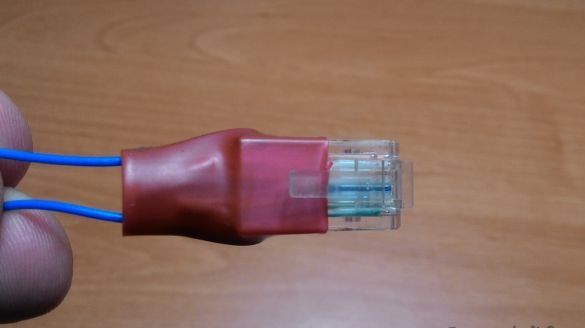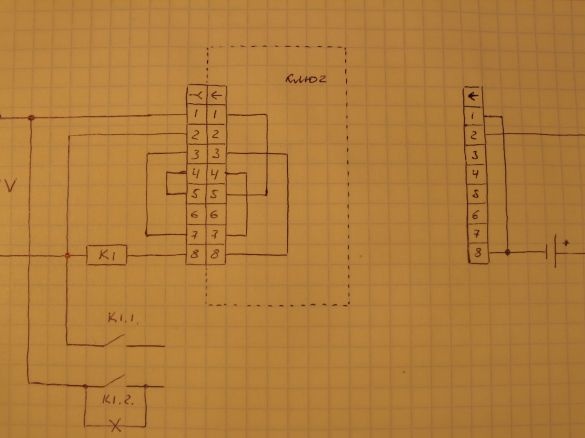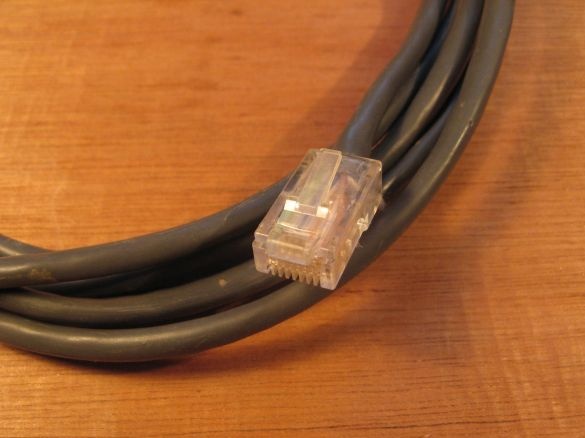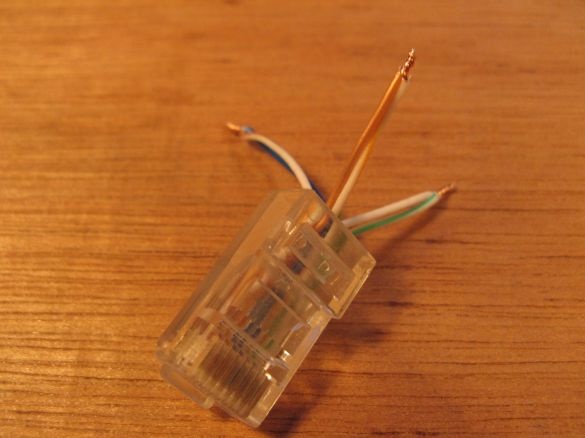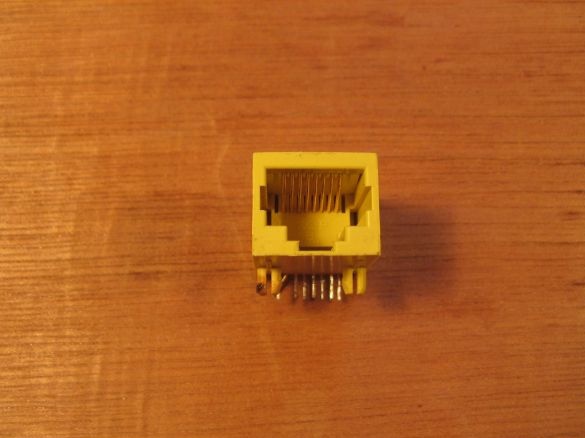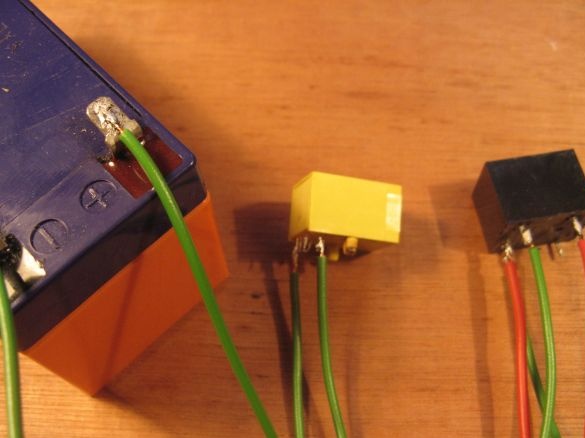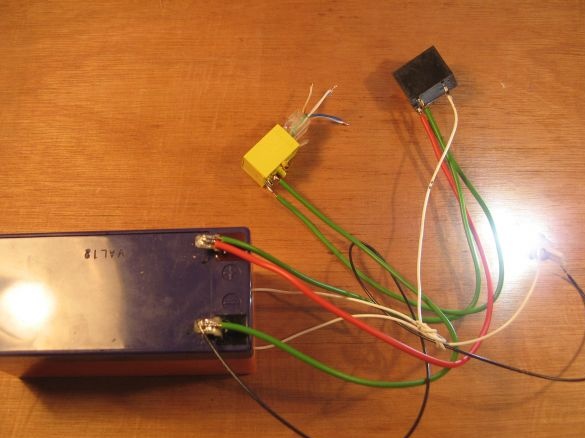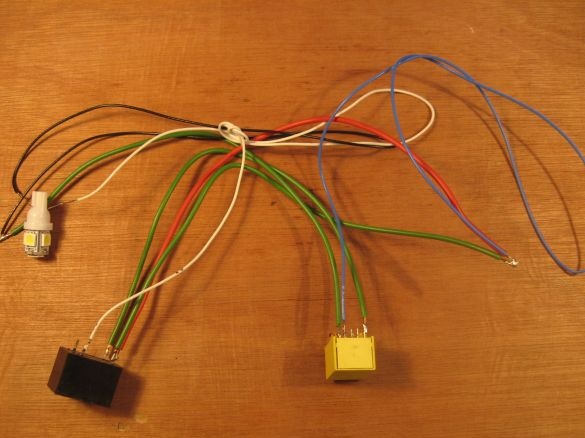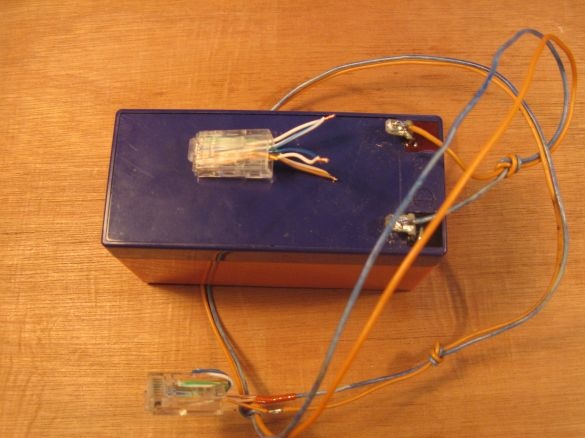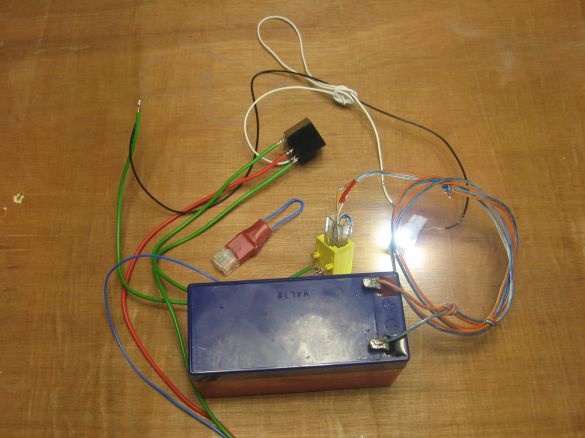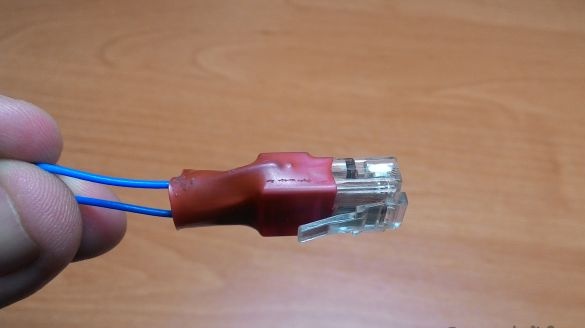In search of an interesting solution for locking the doors of the workshop, I looked through many options for all kinds of locks, bolts, code devices.
Looking through the availability of various components in the workshop, I came across a board from a burned-out router. The idea came to assemble an actuator with a secret.
And from the old router I needed only one detail - the Internet cable connection jack.
For the actuator we need:
- network socket RJ45;
- 12 volt relay;
- two RJ45 connectors;
- the battery for our relay, I have 12 volts;
- wires;
- soldering iron, side cutters, tweezers.
The circuit consists of an actuator and two types of keys. One, let's call him a worker. The second key is a master key or key for an emergency.
When the key is not connected, the relay is not active and the controlled device is in the off state. When we connect the key with jumpers, then minus the power supplied to the relay, and its contacts close. The controlled device turns on, for example, it will be a solenoid. The emergency key work, I will tell in the course of the description. I will also describe why one relay contact is closed by a jumper.
Take our RJ45 connector and crimp it. If there is no crimping tool, then you can take the old cable with crimped connectors. This option is more accessible.
Bite off with a margin, twist the wires for a while according to the scheme. Contact report produced from right to left. We have the connector wires to ourselves and the latch down.
The key is ready. Now go to the main device.
Everything is soldered according to the scheme.
At this stage, we need an RJ45 socket. New or as I have soldered from an old router. The socket from the motherboard of the computer is very suitable, it often has LEDs installed, it would be useful to indicate the operation of the device.
We solder the jumpers with wires or just drops of solder.
I took the relay from the old board of some device. Initially, the circuit relied on a bipolar relay. After assembling the components, I found only a single-pole one, but it will also suit me.
Therefore, in the diagram, a jumper is drawn on one contact.
We solder everything according to the scheme. We produce the contact report from right to left or call the tester.
When everything is soldered, do not forget about the wire going from the second pin of the socket to a plus power. We need this wire for an emergency.
In the role of an actuator, or rather a demonstration of the operation of the device, I connected an LED light bulb (suddenly it will be necessary to control the light bulb). We stick our key into the socket and the light turns on.
We emulate a situation with a power outage, the battery is dead.
We solder our battery.
From the second connector we make a key master key. We unsolder the battery according to the scheme, the one that is drawn separately.
We connect to our circuit. Power is supplied to the relay winding, a plus is received through the emergency wire, which closes its contacts and our light turns on.
On the key, solder the twisted wires and isolate them. From the wire we make a loop for wearing. We shrink everything.
Such an actuator I did. Useful for opening the door of the workshop.
The video for the manufacture of this device, as always, is displayed on the video:


